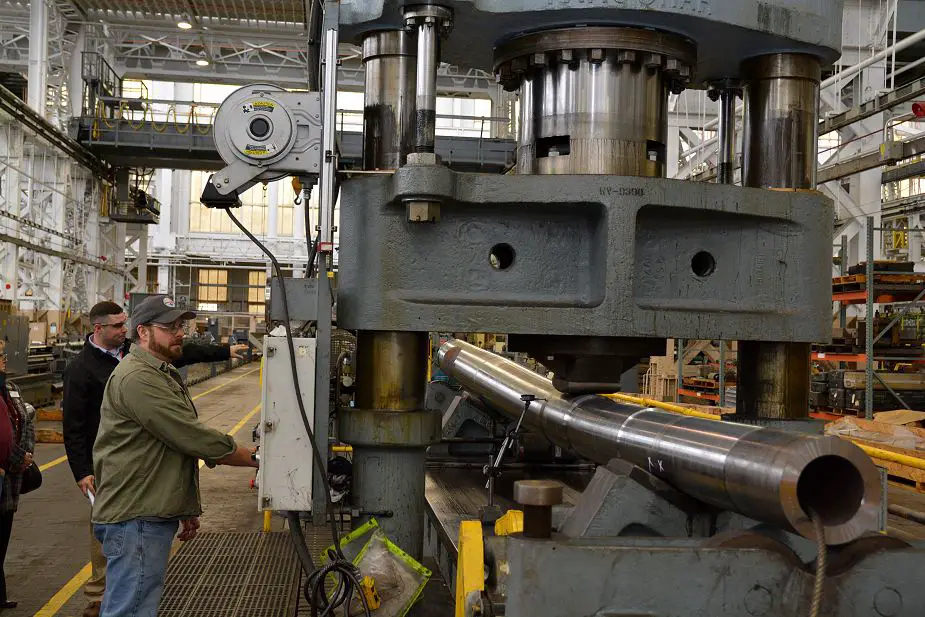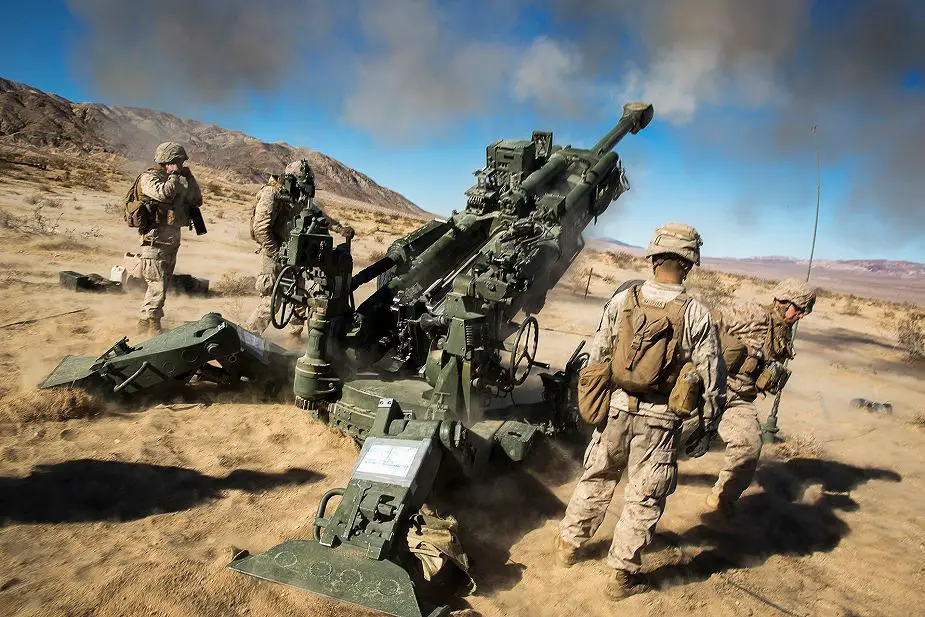|
Military Defense Industry Technology - M776 Full-Bore Chrome Tubes
|
|||
|
|
|||
|
|
|||
U.S. Army and Marines M777A2 155mm towed-howitzers fitted with new M776 Full-Bore Chrome Tubes. |
|||
|
New contract from US Army and Marine Corps for the Watervliet Arsenal wil to manufacture more than 100 M776 Full-Bore Chrome Tubes for the lightweight 155mm towed-howitzer system, the M777A2. The U.S. Marine contract is very similar to the Army order in that the arsenal will manufacture more than 100 M776 Full-Bore Chrome Tubes for the same howitzer system.
|
|||
|
|
|||
 Arsenal Machinist Ryan Putnam placing hundreds of tons of pressure onto a 155mm howitzer tube in an effort to straighten the tube. This is one of hundreds of manufacturing operations required of every gun tube. (Photo Credit: U.S. Army photo by John B. Snyder) |
|||
|
|
|||
|
Given the long lead time to procure raw stock materiel, the arsenal will begin delivery of the chrome tubes for the Army and the Marine Corps in 2019 and will complete both orders by 2020.
These barrels will greatly improve Soldier and Marine readiness as the chrome plating may provide a nearly 50 percent increase in the life of the howitzer tubes, while making it easier for artillery troops to perform maintenance. The M777A2 155mm howitzer is a relatively new weapon system, having only gone into full-rate production in 2005 at the arsenal. But the currently fielded howitzer system's steel barrel does not have a chrome bore. The Lightweight 155mm Howitzer System provides direct, reinforcing and general artillery fire support to maneuver forces. The M777A2 is a towed 155mm howitzer jointly developed by the Army and Marine Corps to replace the M198 Howitzer. The extensive use of titanium in all its major structures makes it 7,000 pounds lighter than the M198 with no sacrifice in range, stability, accuracy or durability. The M777A2's maximum range is 30 km (rocket assisted round) or up to 40 km with the Excalibur precision-guided munition.
|
|||
|
|
|||
 Marines with Battery K, 3rd Battalion, 11th Marine Regiment, fire an M777A2 Howitzer in the Quackenbush Training Area aboard the Marine Corps Air Ground Combat Center, Twentynine Palms, Calif., Dec. 3, 2016, during the regiment's "Top Gun" competition. (Photo Credit: U.S. Marine Corps photo by Cpl. Levi Schultz) |
|||
|
|
|||
|
George Roach, the product manager for these orders, said the significance of these orders represent an approval by the Defense Department to adopt a relatively new manufacturing process for the 155mm towed system that was developed here by arsenal manufacturing experts and by research and design experts from the Army's Benét Laboratories.
The Marines began testing the chrome tubes in 2016 at the Marine Corps Air Ground Combat Center Twentynine Palms, California, and the results were stunning. According to a May 2016 press report by Lance Cpl. Levi Schultz, 11th Marine Regiment, Marine artillerymen found the chrome tubes easier to clean than steel tubes because the chrome lining tended to shed off residue much easier. The Marines found that they could fire thousands and thousands of rounds before the tubes would start to show wear. These results were exactly what the arsenal leadership was hoping for from the testing. Roach said that this new manufacturing process represents a new era in advanced howitzer technology and manufacturing. "Given that there are more than 1,000 of these gun systems in the Army and Marine inventory," he said, "there is potential for the arsenal to receive more orders for full-bore chrome barrels as these orders only reflect about 20 percent of the inventory." The Watervliet Arsenal is an Army-owned-and-operated manufacturing facility and is the oldest, continuously active arsenal in the United States having begun operations during the War of 1812. The arsenal is a subordinate command to TACOM Life Cycle Management Command and the Army Materiel Command.
|
|||














